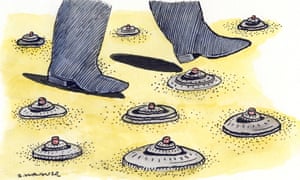Anjana Ahuja in The FT
The 1996 paper is now legendary in academic circles. “Transgressing the Boundaries: Towards a Transformative Hermeneutics of Quantum Gravity”, penned by the mathematician Alan Sokal, was published in a cultural-studies journal. It claimed that physical reality was a social and linguistic construct.
It was a floridly written spoof: a jargon-heavy, plausible-sounding parody designed to pander to the biases of lazy reviewers and expose flaws in the academic enterprise. The bogus paper, targeting preening postmodernist intellectuals pontificating on scientific matters, confirmed the suspicions of Sokal — now at University College London — that the canon of human knowledge was vulnerable to rogue infiltration.
The hoax seems comically quaint today compared with the fraud crisis plaguing science journals. This week, the publisher Wiley announced it would close 19 journals, some of which had been linked to large-scale research fraud. In the past two years, according to reports, it has retracted more than 11,000 papers. Wiley and other publishers, such as Springer Nature, are battling an epidemic of fakery.
But battle it they must. Without due diligence, science may suffer a reputational hit. With so many scientific challenges ahead — climate change, artificial intelligence, energy security, pandemics — it is a loss of trust humanity can ill-afford.
Scholarly publishing is surprisingly lucrative, worth about $28bn annually worldwide. While top journals charge hefty subscriptions, others will publish, subject to peer review, for a fee. That system feeds off a “publish or perish” research culture, with academics rated for grants, tenure and promotion according to how often they publish and how frequently they are cited.
The result is a feverishly competitive climate where authorship is a commodity, now brazenly touted on the open market. Nick Wise, an engineering researcher at Cambridge university, collates adverts by so-called authorship brokers and posts them on X under the handle @author_for_sale.
In a 2022 interview with Retraction Watch, a website that monitors papers under suspicion (for unintended errors as well as fraud), Wise itemised how brokers hook up with unscrupulous academics: “There’s this entire economy, ecosystem of Facebook groups, WhatsApp groups, Telegram channels selling authorship for papers, selling citations, selling book chapters, selling authorship of patents.” All pollute the knowledge pool.
Authors, of course, need papers to put their names to. This is where the “paper mill” comes in, an industrial-scale operation that often uses AI to churn out papers en masse (many such mills are based in China). These are then submitted to multiple journals in the hope that some will slip past overworked reviewers.
Investigators use fraud-busting software to spot defective offerings, such as the “tortured phrases” spat out by AI-generated papers to fool plagiarism detectors. AI becomes “counterfeit consciousness”; breast cancer is mangled into “bosom peril”. Other red flags include unlikely author collaborations; irrelevant reference lists; and clusters of papers that cite each other incestuously. “My hunch is that most fraud goes undetected,” Wise told me.
Publishing companies, meanwhile, are opening fraud departments and trying to trap perpetrators who submit identical papers. But it is a perpetual struggle: brokers are wording their adverts more coyly; AI is writing more convincing papers.
As Sokal correctly noted in his 2008 book Beyond the Hoax, preserving the integrity of science is an existential matter. “Clear thinking, combined with a respect for evidence . . . are of the utmost importance to the survival of the human race in the twenty-first century,” he wrote. This is an arms race that the science sleuths must win.


